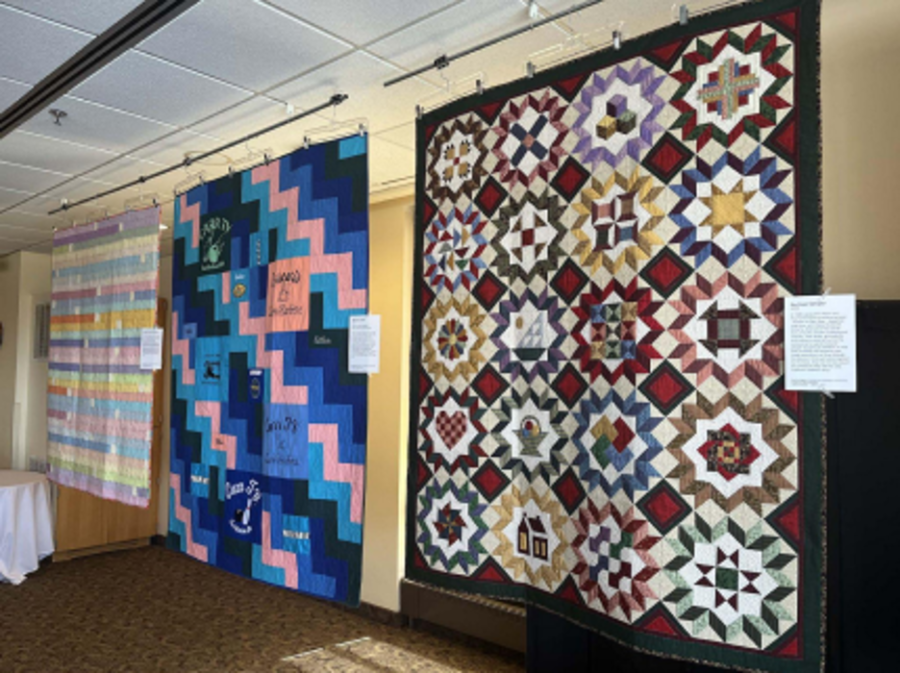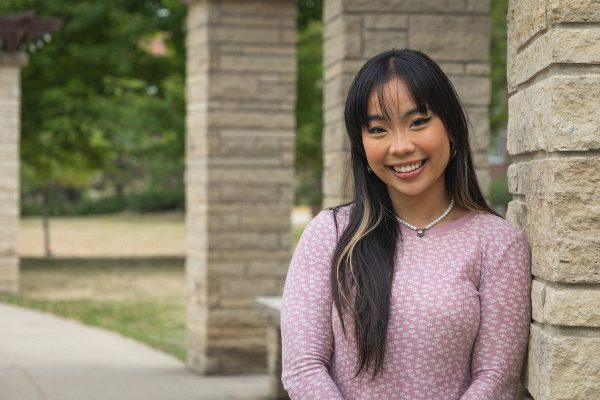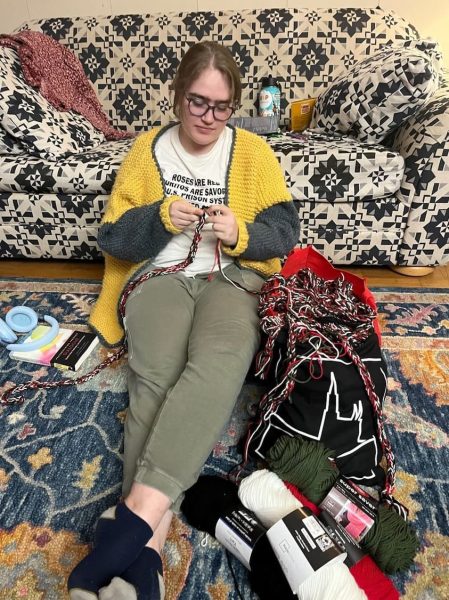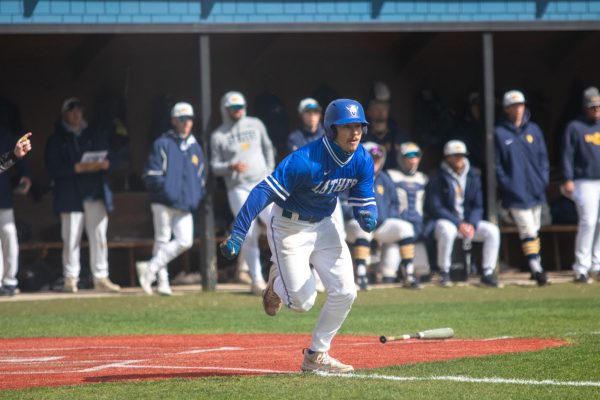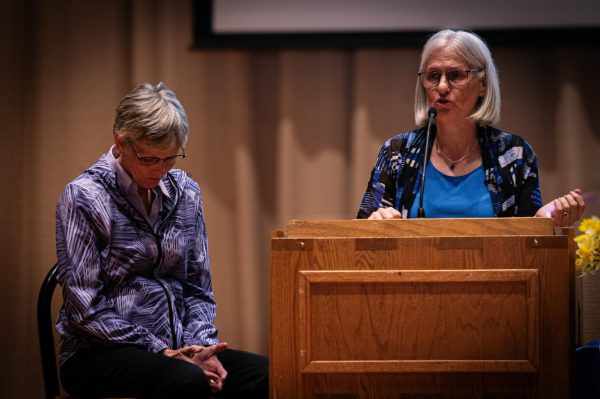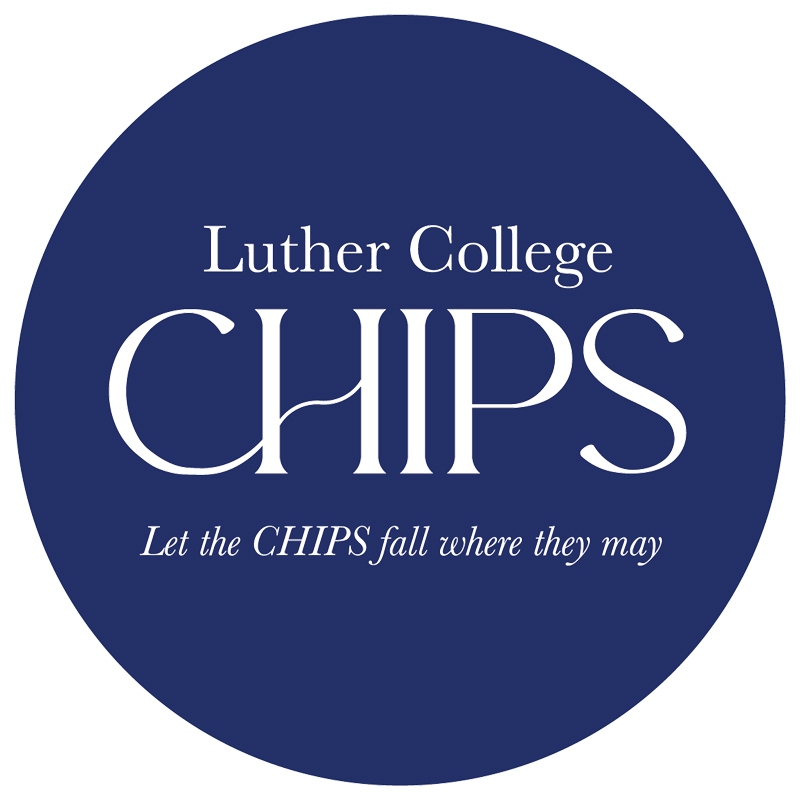Social Fabric: Quilting and Singing in Community
Quilting is more than just a hobby, it is a form of art. The finished product can tell a story, and on Sunday, April 2, Luther College gave space to local quilters to display their quilts and share their stories. Community members gathered in the Peace Dining Room to learn about the intentionality of quilting and see the new Luther College Suture Exhibition.
The Luther College Suture Exhibition is housed in the Union Gallery and is made up of quilts made by the Migrant Quilt Project. In 2022, over 800 migrants died trying to cross the U.S.-Mexico border. The project works to acknowledge long-standing discriminatory U.S. border policies and the racist rhetoric that dehumanizes these migrants. By stitching the names of those who died in the border crossing, the project hopes to bring their humanity back to the forefront of discussion. Each quilt is made of materials found at migrant lay-up sites, which are shaded resting places, used by those trying to cross the border.
In addition to viewing the Luther College Suture Exhibition, local quilters were in attendance to share their stories and discuss techniques and motifs that will help people unfamiliar with the practice interpret the quilts. One local quilter in attendance was the two-time winner of the Minnesota Quilter of the Year award Mike Ellingsen. Ellingsen, a retired music teacher, enjoyed having the space to show his work, as well as the opportunity to mix the disciplines of music and quilting. Ellingsen shared that this mixing of disciplines is what makes quilting such a great hobby for a person such as himself.
“Being a vocal music teacher, you use your voice all day, and quilting is a silent hobby,” Ellingsen said. “You teach hundreds of kids all day and quilting is a solitary hobby. You teach music, which is important, but once you make music it is lost in the ether, and when you are done quilting you have something concrete in your hand, yet it is [still] expressive and creative.”
Alongside the focus on quilting, the Aurora Choir was also in attendance and sang folk songs associated with Mexico, Columbia, and Venezuela. Two of the songs, “La Llorona” arranged by David Conte and “Duerme Negrito” arranged by Emilio Solé, dealt with themes of mourning, labor and separation. Assistant Professor of Music and Aurora Conductor Adrianna Tam planned the choir’s repertoire for the performance around the stories of the quilts, specifically the Migrant Quilt Program.
“I was curious about this because I am always interested in ways that we can look at an important topic of conversation from more than one way,” Tam said. “I love the interdisciplinary potential of a liberal arts college and finding ways to also be engaged with the community. I think that the bigger picture here is [bringing] awareness to people in the global community that there are folks who, in search of a better life, continue to cross the border. Since the Migrant Quilt Project faces that directly, I wanted to find a way to connect to that in my own field in choral music.”
The interdisciplinary nature of the liberal arts tradition focuses on development through an education in the humanities, natural sciences, and social sciences. It also gives space and opportunity for the types of connections made at the event between community members and students. Ellingsen explained that he grew up in an era where boys and girls had separate disciplines they were taught in school. Because of this, he didn’t realize his passion for sewing until adulthood.
“Both my mom and my wife’s mom were wonderful sewers,” Ellingsen said. “I knew how a sewing machine works, but I grew up in an era where boys took shop and girls took home economics. It was not until years later [and] I was married that my wife took a community education sewing class because she had not liked home economics in high school. However, she took the class and hated every single minute of it. [Since] she was not into it, I gave it a try and was straight into it.”
For Ellingsen, a love of sewing came first. However, he soon realized that he had a passion for quilting, and he has now made hundreds of quilts. After honing his sewing skills, his first exposure to quilting came when he and his wife saw a quilting kit in a magazine that was too expensive for the young couple to buy.
“We were young and married, and it was too expensive to [buy],” Ellingsen said. “But we could afford to buy the fabric in our local store. I was hooked. I loved the math, I loved the colors involved and it has been a wonderful hobby for me.”
Events like these give Luther students the opportunity to broaden their horizons and connect with the community. To participant Elli Ess (‘26), the event gave space for her to engage with other people and learn the cultural significance of practices that many people know little about.
“It was just heartwarming to see that within these projects, there is so much story and background that at first sight might mean nothing but tells a whole story through each stitch,” Ess said. “I believe that events like these are important because it teaches significance about things that I would not consider important at first. I thought of quilting and immediately pictured a grandma at church just knitting randomly, but there is actual cultural significance to this form of art and I am grateful I got the opportunity to learn about it.”
Tam acknowledged that the Decorah community, and society as a whole, is made up of a patchwork of different cultures. She also believes that giving people like Mike Ellingsen the space to display their work and let them share their stories helps illustrate social connections.
“While it can seem this way, we do not actually live in a bubble,” Tam said. “Decorah can easily feel that way, but we are not a monocultural society. It is important to engage with people, especially with people with whom we may not normally have contact [with], but it is very easy to alienate people in a way that fosters fear more than understanding.”
As participants learned, quilting is very personal, from the choosing of the fabric to even the type of stitching. It is also a powerful form of storytelling. For anyone considering the hobby, Ellingsen shared some words of encouragement.
“Jump right in,” Ellingsen said. “But perhaps start with a smaller project. It is better to test some things in a smaller project where you can play and make some mistakes and learn from that.”
To see the quilts from the Migrant Quilt Project, visit the Luther College Suture Exhibition in the Union Gallery. Preserved in each quilt, there is a powerful and meaningful story waiting to be learned and appreciated.

